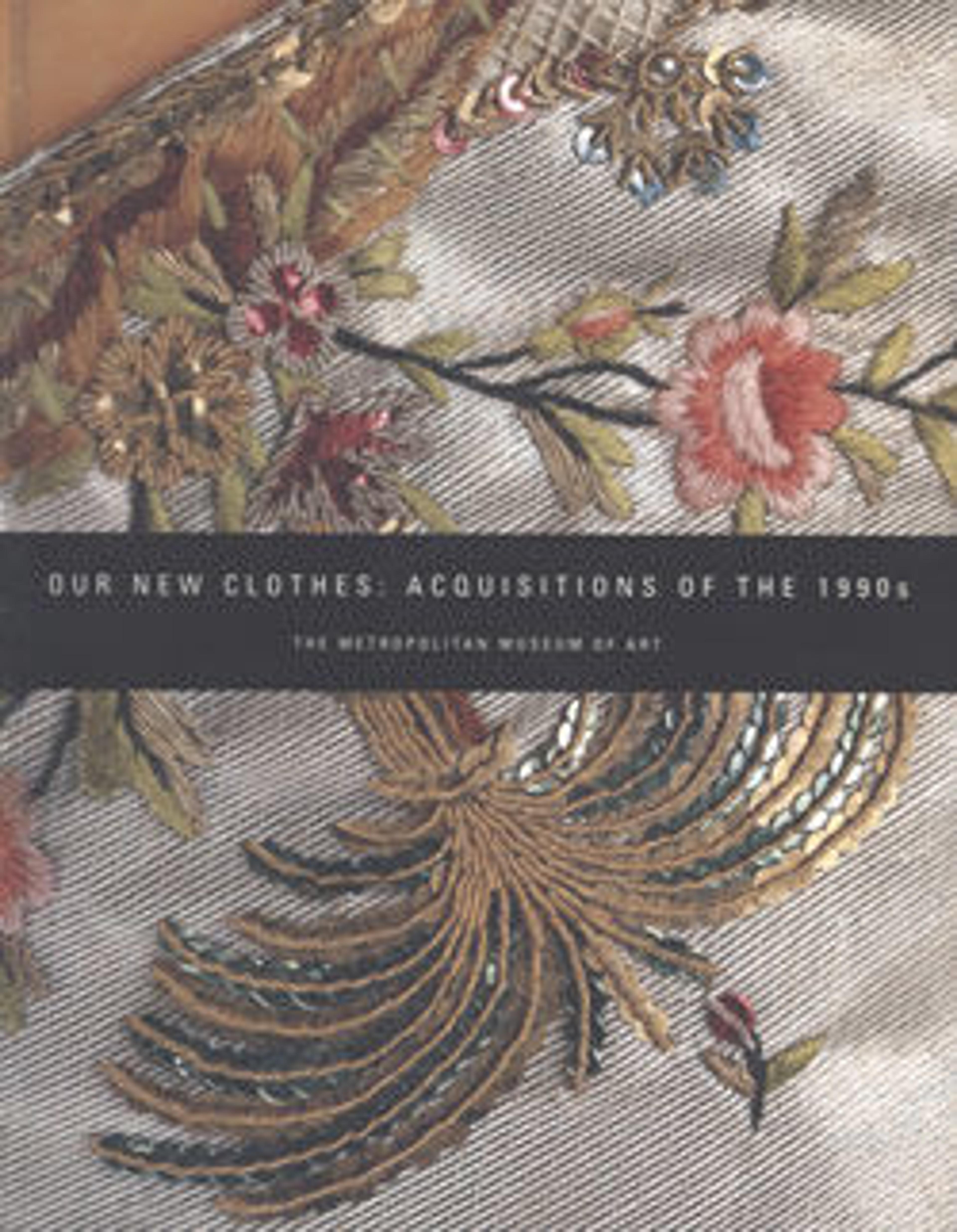Suit
This magnificent suit remarkably survives complete with all of its components. Because elements of menswear were often retailored to accommodate changes in the wearer's size or in fashion, this ensemble in essentially unaltered condition is an exceedingly rare example. Characteristic of the fashion of this date, skintight breeches that buckle below the knee and a fitted waistcoat are almost entirely covered by a coat with collarless, narrow chest and stiffly flaring skirt that concentrates emphasis on the lower torso and thighs. The placement of the opulent applied decoration bolsters this effect. Although the coat retains stiffness reminiscent of the 1750s styles, the buttons do not meet below the upper chest and the angular opening anticipates the pronounced front curve and diminishing skirt of late decades. The color coordination of all three parts and the utilization of wool, both decidedly English elements that anticipate modern attire, were generally reserved for informal wear. Here, however, the suit is resplendent with an abundance of gold buttons and braid more closely associated with high-style occasions.
Artwork Details
- Title: Suit
- Date: ca. 1760
- Culture: British
- Medium: wool, gilt metal
- Credit Line: Purchase, Irene Lewisohn Bequest and Polaire Weissman Fund, 1996
- Object Number: 1996.117a–c
- Curatorial Department: The Costume Institute
More Artwork
Research Resources
The Met provides unparalleled resources for research and welcomes an international community of students and scholars. The Met's Open Access API is where creators and researchers can connect to the The Met collection. Open Access data and public domain images are available for unrestricted commercial and noncommercial use without permission or fee.
To request images under copyright and other restrictions, please use this Image Request form.
Feedback
We continue to research and examine historical and cultural context for objects in The Met collection. If you have comments or questions about this object record, please complete and submit this form. The Museum looks forward to receiving your comments.
